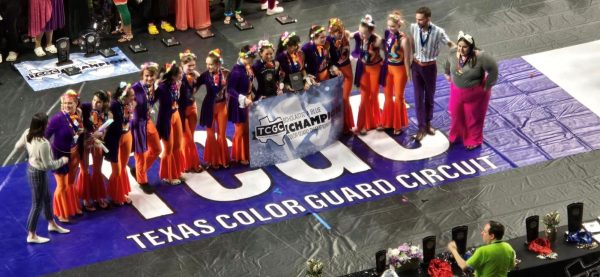Sexes still view rape very differently
Some boys see exceptions to ‘no means no’
“She asked for it”, “Boys will be boys”, “It’s not rape if you liked it.” Sadly, we’ve all heard one (or all) of these at some point in our lives. How could being a “boy” excuse them from the crime they committed? How could the clothes the girl was wearing or the state of mind she was in give that boy the right to do as he pleases with her body?
The idea that rape victims are promiscuous girls in short skirts is a vision widely accepted, although studies done by Rape, Abuse, & Incest National Network (RAINN) show that really anyone (male or female) are possible victims of this crime.
We asked Tomball High School students to answer a poll that asked a series of questions all beginning with: “Is it all right if a male holds a female down and physically forces her to have sex if…” Out of more than 100 students surveyed, a significantly larger portion of male students in comparison to female students answered yes to every related question.
When asked if it is acceptable to take advantage of a woman if they get someone sexually excited, 28 percent of male students surveyed answered “yes”, as opposed to 9 percent of female students. Another 24 percent of male students answered “yes” if the woman has led him on. And while none of female students surveyed answered “yes” to multiple questions, there was an alarming recurring 12 percent of male students who answered “yes” to every question.
The fact is, there should be no “if” situations. The right answer is always “no”. There is never a good reason to take advantage of someone.
When someone says to utilize the “buddy system,” it usually gets a laugh or two, but it’s true that if you’re with another person, your chances of becoming a rape victim is considerably lower. Even scarier than the 9 percent chance of being attacked by a complete stranger is the fact that more than 50 percent of rapes are at or within one mile of the victim’s home (where people are supposed to feel the safest) and committed by someone they know.
Thirty-eight percent of rapes are committed by a friend or acquaintance, 28 percent are committed by an intimate person, and seven percent are committed by relatives.
Instead of being a supportive figure for rape victims, college administrators have pushed the issue under the rug to preserve their reputations. Federal investigators are checking whether 55 colleges and universities illegally handled sexual violence and harassment complaints, the U.S. Department of Education said Thursday, May first.
Two Texas universities, Southern Methodist University and the University of Texas-Pan American, are on this list.
More than 25 percent of rape victims are between the ages of 18 and 25 but less than five percent of attempted and completed rapes are reported to local authorities. This is way below the general population where about 40 percent of sexual attacks are reported. And 42 percent of rape victims never tell anyone about the crime.
Forty-one percent of college rape victims were virgins at the time.
There’s nothing “rude” about denying an advance because every person (guy or girl) has the right to say no. “She didn’t say yes, but she didn’t say no either” is still considered rape.
And a person incapable of saying no – due to drugs, alcohol or physical impairment – is also incapable of saying yes.
Every year there are 237,868 rape victims, not including child molestation. That means a sexual assault happens every two minutes.
Rape victims are not only victims of the act itself, but are three times more likely to suffer from depression, six times more likely to suffer from post-traumatic stress disorder, 13 times more likely to abuse alcohol, 26 times more likely to abuse drugs, and four times more likely to contemplate suicide.
When we stop telling girls that it’s their fault for being raped through the media, rape jokes, “distracting” dress codes, and ideas that if you do something for a guy, you have to put out, the rape culture we live in will diminish.


















